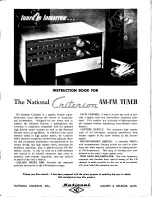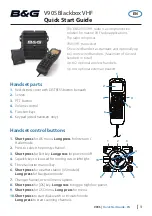
21
6.6 WebGUI Control
• Important Notes
- All major functions of the unit, including status, streaming
method, streaming channel selection, output resolution, video
wall configuration, EDID management, Ethernet settings, and
reset/firmware functions are controllable via multiple tabs in the
WebGUI interface allowing for reasonably intuitive operation.
- Each Transmitter and Receiver is controlled by its own WebGUI
interface which may be accessed by opening a standard web
browser on a PC and typing in the IP address of the unit you wish
to connect to. If you do not already know the IP addresses of
the units in your system, you can discover the IP addresses by
disabling the streaming link on either the Transmitter or Receiver
units in a connected system and connecting an HDMI display to
each Receiver. This is done by pressing and holding the “LINK”
button on the front of the unit for 3 seconds (The LINK light will blink
rapidly, then turn off).
-
Once the link is broken, each connected Receiver will output
a 640×480 black screen with OSD text at the bottom identifying
its own IP address (Local IP), as well as the IP address of the
Transmitter (Remote IP) that shares the same broadcasting
channel with it (channel 0 by default). After obtaining the IP
address information, press and hold the “LINK” button again for 3
seconds to return the unit to normal operation (The LINK light will
light up solid yellow).
FW: 15-Nov-10 4298
Local IP: 169.254.9.180
Remote IP: 169.254.11.173
ID: FFFFFFFFFFFF
-
Once you have connected to a unit’s WebGUI, you will be
presented with a screen containing multiple tabs for each
functionality area of the unit. To view the contents of a tab,
click on the appropriate button at the top of the window. The
individual tabs and functions will be introduced in the following
sections.
- Video over IP streaming uses a large amount of bandwidth
(especially at higher resolutions) and a Gigabit Ethernet network
















































